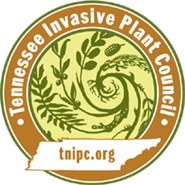Lepidium campestre (L.) Ait. F.
Field Pepperweed| Category |
|---|
| Forb/Herb |

Description
Height
Field Pepperweed grows to 2 feet (0.5 m) tall.Stem
One or more flowering stems develop from a leaf rosette and are more or less erect. They are grayish green and covered with fine hairs.Leaves
The basal leaves are narrowly obovate and occasionally pinnatifid toward the base. Their margins are entire or slightly undulate. The stem leaves are alternate, up to 3 inches (7.62 cm) long and 0.75 inch (1.9 cm) across, becoming smaller near the apex. They are narrowly sagittate in shape and slightly dentate, entire, or undulate along the margins, and each clasps the stem at the base. Both the basal and stem leaves are grayish green and covered with fine hairs.Flowers
Each flower is about 1/8 inch (.32 cm) across, consisting of four white petals and four green or purplish green sepals that are lanceolate-oblong. The pedicels of the flowers are slender, hairy, and spreading.Fruit
Each seedpod is about 0.25 inch (.64 cm) long, oval-shaped, somewhat flattened, and conspicuously notched at its apex. It is divided into two cells, each cell containing a single seed. Each seed is reddish brown or reddish yellow, and its flavor is pungent.Images
Photo: Richard Old, XID Services, Inc., Bugwood.orgMore images of Lepidium campestre
Life History
Field Pepperweed spreads by reseeding itself and occasionally forms colonies. It is a member of the Brassicaceae (Mustard) family. The blooming period occurs during late spring or early summer and lasts about 1-2 months, though some plants may bloom later in the year. The seedpods can be carried by the wind or float on water. The seeds of Field Pepperweed are pungent and flavorful.Field Pepperweed can be distinguished from other Lepidium spp. (Pepperweeds) by its hairy stems and leaves. The fuzzy stems and leaves are the most striking characteristic of this plant. Nearly glabrous specimens occur, but they are uncommon. The white flowers are quite small on rather long, hairy pedicels.
Habitat
Habitats include cropland, fallow fields, pastures, areas along roadsides and railroads, grassy banks, and waste places. Disturbed areas are preferred.Origin and Distribution
Field Pepperweed originated in Europe. It invades open and disturbed areas. Other States Where Invasive: AR, AZ, CA, CO, CT, DC, DE, FL, GA, IA, ID, IL, IN, KS, KY, LA, MA, MD, ME, MI, MN, MO, MS, MT, NC, NE, NH, NJ, NM, NV, NY, OH, OK, OR, PA, RI, SC, SD, TN, UT, VA, VT, WA, WI, WV, WYSources
Assorted authors. State noxious weed lists for 46 states. State agriculture or natural resource departments.Haragan, P.D. 1991. Weeds of Kentucky and Adjacent States: A Field Guide. The University Press of Kentucky. Lexington, Kentucky.
Southeast Exotic Pest Plant Council. 1996. Invasive exotic pest plants in Tennessee (October 1999). Research Committee of the Tennessee Exotic Pest Plant Council. Tennessee.
Uva, R.H., J.C. Neal, & J.M. DiTomaso. 1997. Weeds of the Northeast. Cornell University Press. Ithaca, New York.
